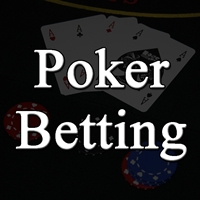
One of the biggest flaws that novice and intermediate Texas Holdem poker players have is when they use weak betting lines when more aggressive play would not only take the pot down but also increase their earn rate. The problem as far as novice players are concerned is that aggressive play brings with it a much higher level of variance. So many players shy away from this. One such example comes in the shape of set mining. This is the process of limping or calling raises with pocket pairs in the hope of making a set and getting a big pay off.
This is usually a good indicator of a low variance style of play and if a player is a chronic set miner then it also means that they prefer a low variance style of play overall. Another weak line may come in the shape of the following; a weak player raises with A-Qs and gets one caller from the big blind. The flop comes J-7-4 rainbow and the flop goes check-bet-call. The turn card is a 6c and the action once again goes check-bet-call. The river card is the Kd and your opponent checks again and you check it back and your opponent wins with pocket eights.
Had you bet or shoved the river then you would have faced your opponent with a very tough decision and all but a calling station would have called that bet or someone with a small stack left on the river. Betting two streets and then giving up on the river is weak poker in heads up situations and you really need to fight this tendency to go into shut down mode simply because a single opponent plays with you. In the previous example then even if your opponent held a hand like top pair with J-10 then a big river shove would have looked awfully scary to them and that sort of bet is going to take advantage of players who are looking to drift into pot control.
The weak novice sees two bets get called and then starts to see Indians behind every bush and checks fearing that another bet would get called. The fact of the matter is that another bet on the river is far larger than a bet on the turn which in turn is larger than a bet on the flop. Many players simply have their cut off point with regards to how much money they are prepared to risk on a certain type of hand. If you raise to $6 pre-flop in a NL200 game then if your opponent called with pocket eights then their investment is only $6 at that stage or 3% of their $200 stack.
With $15 in the pot on the flop then you may fire a c-bet for $10 which they called but that $10 is still only 5% of their starting stack of $200. With $35 in the pot on the turn then another barrel may be in the region of $25 which is a higher percentage at 12% of their stack. This now puts $85 in the pot if that bet gets called then a big river bet of the pot would be 42% of your opponents starting stack and more than three times the percentage required to call on the turn, this is simply too much for most players with mediocre hands to stomach. With a grain of salt if you are up against a donk. Also, if the flop has straight or flush draws, you do not want to be checking behind turns to give your opponent a free card to beat you!


